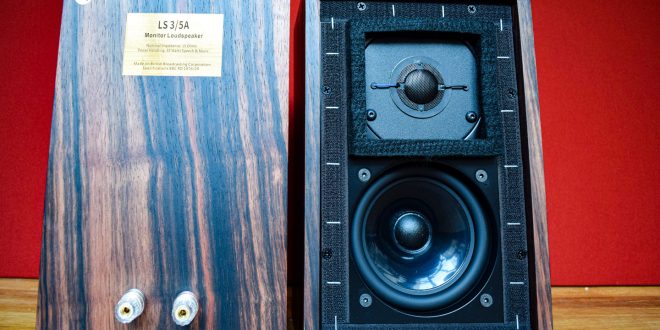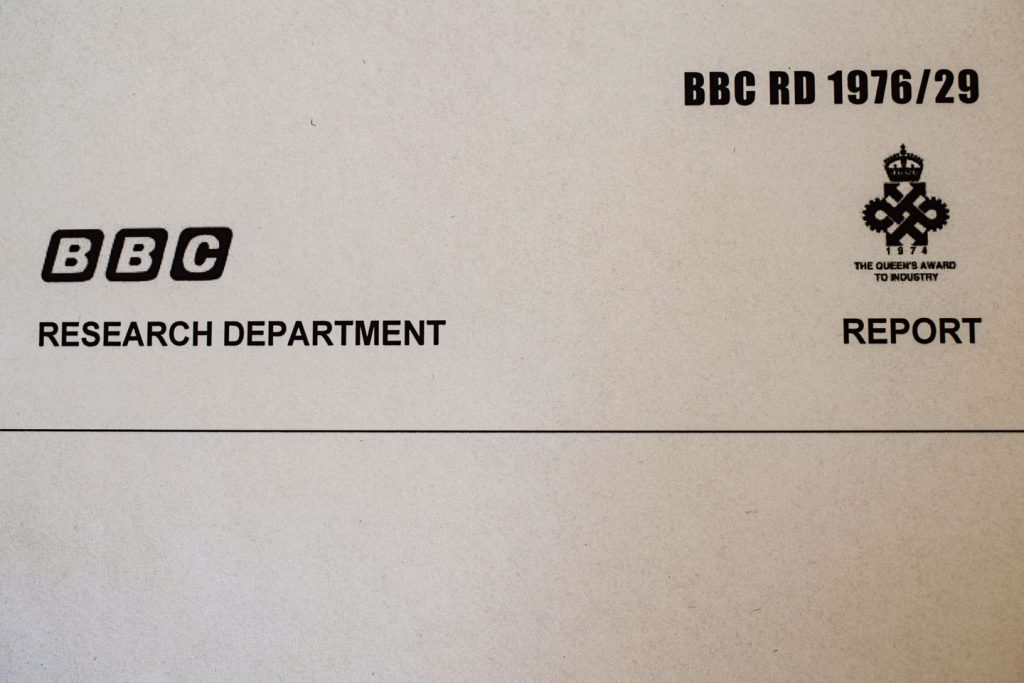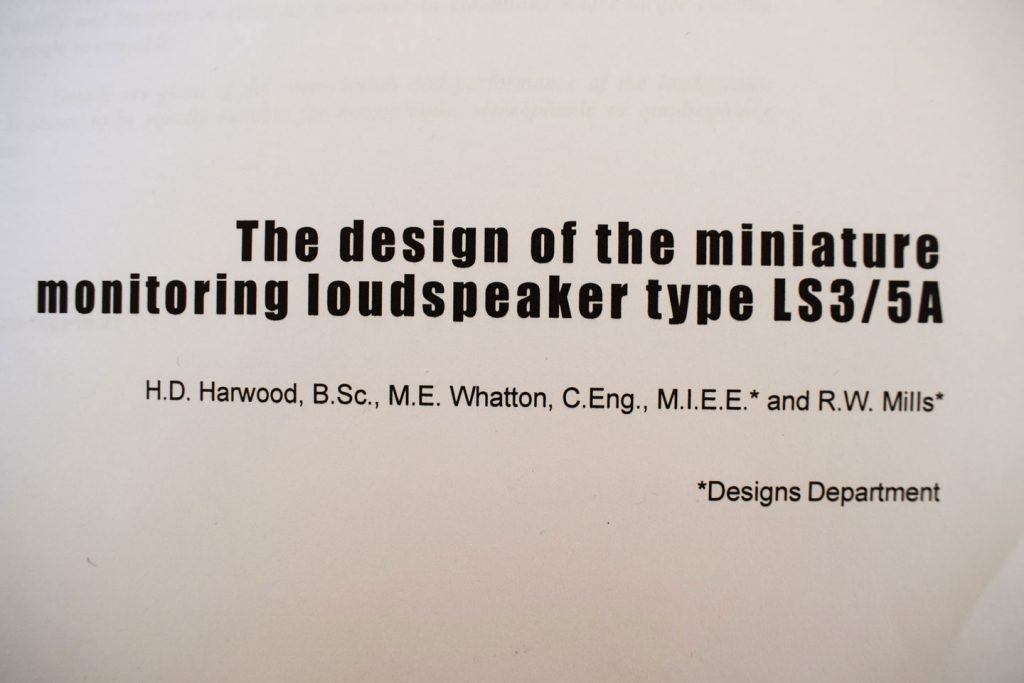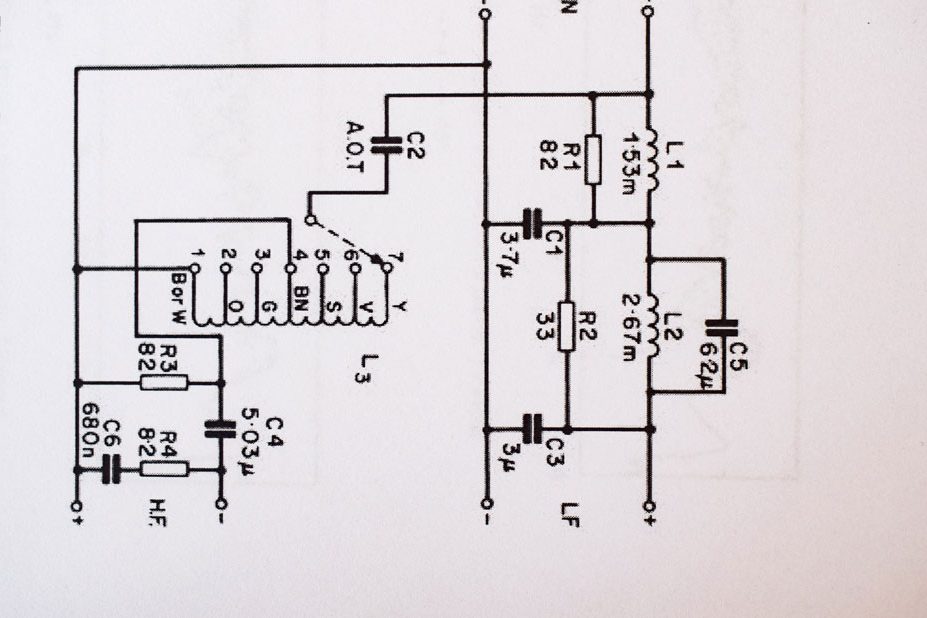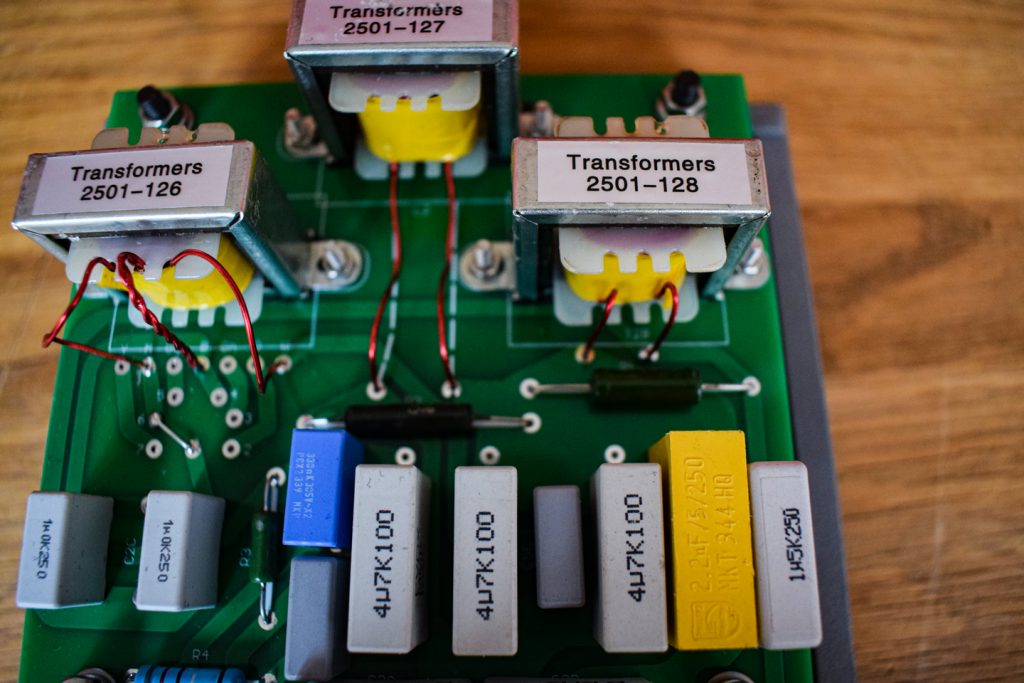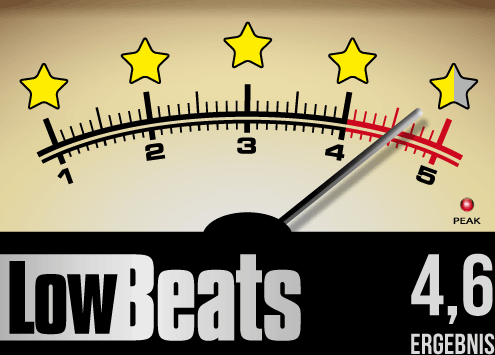Quiz question: What do the British loudspeaker manufacturers Rogers, Spendor, Harbeth, KEF, Chartwell; RAM, Goodmans, Stirling Broadcast and Falcon Acoustics have in common? Answer: They all manufactured (or still manufacture) the BBC compact speaker legend LS 3/5a under license. The number of current successors is almost unmanageable. And now, with the Harwood LS 3/5a, a further variant has been added. This one, however, is the nicest, the smartest – and the cheapest. This audiophile gem is also available as a kit with a fully assembled baffle for just 890 euros. And if you build the housing yourself, you’ll understand the idea behind the LS 3/5a even better…
The LS 3/5a is the best-known high-end compact monitor in the world and its origins are well documented. Wikipedia alone devotes dozens of pages to it. Nevertheless, his story is briefly outlined here once again. At the end of the 1960s, the venerable British Broadcasting Corporation (BBC for short) was looking for a suitable listening monitor for its broadcasting vans, in which there was naturally little space. Nothing suitable was found on the market and the in-house engineering team was commissioned to develop a tailor-made solution. The head of development at the time was a certain Dudley Harwood.
There are a confusing number of names in the history of LS 3/5a, but you have to remember this one. Under Harwood’s leadership, the BBC team developed the blueprint for what was then the perfect 2-way closed-back monitor. But because the BBC is a radio station and not a manufacturer, the order (or license) to build the LS 3/5 was given to various loudspeaker specialists – see the list above.
In terms of drivers, the BBC developers used the best available at the time: a small bass-midrange driver with a Bextrene cone, the KEF B110, and a tweeter with a Melinex dome tweeter, the KEF T27. When KEF modified the bass-midrange driver after a long run, the BBC development also had to be adapted: the LS 3/5 became the LS 3/5a in 1976. In total, it is estimated that around 100,000 pairs of the LS 3/5a licensed by the BBC have been sold to date; the very similar models such as the ProAc tablet 10 or the P3ESR just mentioned.
Let’s stay with Dudley Harwood for a while. The man had a hobbyhorse: unfilled polypropylene membranes. They were all the rage at the time: stiffer than the often used Bextrene and better damped than the paper that had been used for decades. So he left the BBC and Harwood and his wife Elisabeth founded the Harbeth company, which still offers fine loudspeakers with the look of those days and also has an LS 3/5a derivative in its range: the Harbeth P3ESR which was already tested by LowBeats.
The concept of the Harwood LS 3/5a
So far, the whole LS 3/5 story has been a purely British affair. Until last year. Then the smart Raimund Saerbeck, head of HiFisound Münster, threw his hat into the ring. Saerbeck is one of the oldest names in German loudspeaker self-assembly and was already selling the legendary Harwood bass-midrange drivers in the 1980s. In 1992, he founded the Harwood Acoustics Company in Germany, without the Harwood family objecting. He made Harwood the main brand of his kit store and sold many models under this label (in addition to the original Harwood drivers LF5 and LF8), which he had developed by his Asian supplier – for example several Air Motion Transformer tweeters.
The emerging hype surrounding the LS 3/5a inspired the man from Münster to come up with an audacious idea: wasn’t Dudley Harwood the leader of the team that developed the LS 3/5 or the LS 3/5a? And shouldn’t there therefore also be a version under the Harwood label? Exactly!
Saerbeck studied the research results of the BBC team (Saerbeck: “This is the perfect construction manual”) and had the original drivers of the LS 3/5a, the KEF B110 and the KEF T27 tweeter, reproduced 1:1 by his loudspeaker specialists. He had previously sold hundreds of these KEF drivers and measured them dozens of times, so he knew what he wanted and exactly what the tweeters and mid-bass drivers needed to be.
His Asian suppliers did a great job. Point one: Both are identical to their predecessors down to the last detail. Point two: The transmission behavior of the two drivers is so similar to the original drivers that Saerbeck was able to stick to the original crossover circuit.
Saerbeck implements the crossover recommendation of the BBC engineers with lightning precision: with the best components and on an optimally conducting circuit board. There is a little anecdote about this. An LS 3/5a from Rogers from the eighties has accompanied me for many years. I use them often and with pleasure – as a permanent reference over the decades, so to speak. And of course I opened it – just to see what it looked like inside. And closed again straight away. The dreadful crossover component grave with cheap electrolytic capacitors really shook me up. But it still runs perfectly.
My old Rogers from the 1980s also makes it clear how close Saerbeck is to the original with its new Harwood LS 3/5a:
The housing of the Harwood LS 3/5a…
…naturally follows the original. This means: walls made of 12 mm thick birch plywood. There are endless series of studies on this subject, especially from the BBC, which prove that in certain cases these comparatively thin walls in combination with bitumen damping deliver the best results in terms of sound.
For us Germans, this is not always easy to take. There was once this editor from this German trade magazine who reinforced the “rickety” walls of a Spendor with additional plates and screw clamps and celebrated the slimmer bass as a successful result: “That’s how it’s done!”
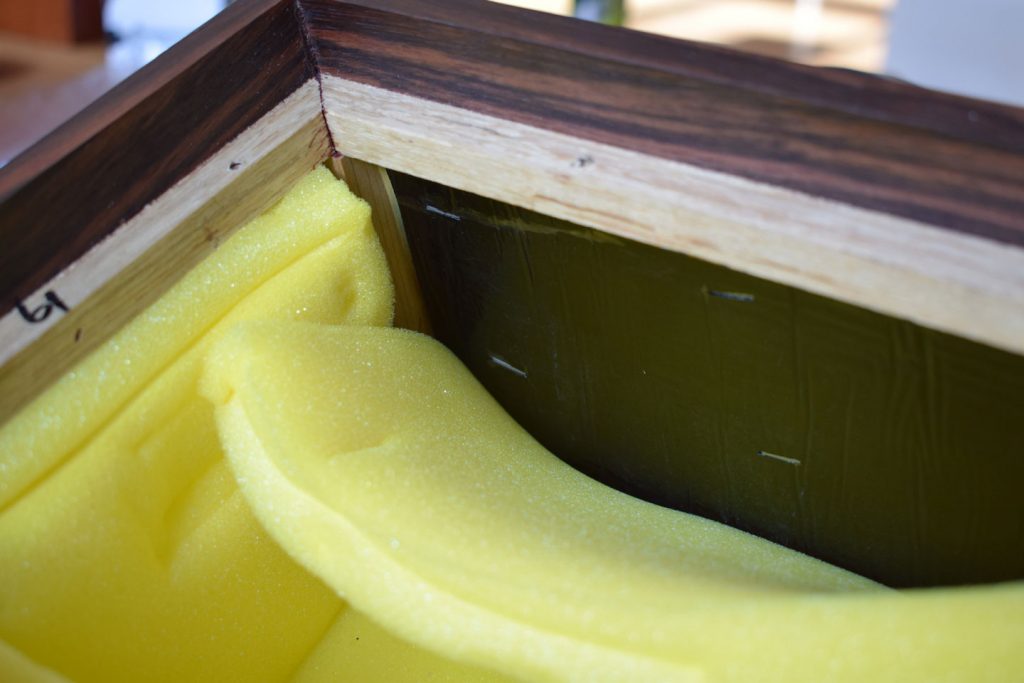
No. You don’t do that. The cabinets from Harbeth, Spendor & Co are based on a great deal of listening experience and – as already mentioned – a lot of research work. It should sound like this.
The Harwood LS 3/5a is available from HiFisound Münster as a finished speaker in a fine rosewood veneer (of course an imitation rosewood) for 1,600 euros. It looks great and is really inexpensive. However, for anyone who is a bit of a handyman and wants to delve deeper into the subject of LS 3/5a, I recommend the kit version. The kit is complete, the baffle is pre-assembled. All you have to do is glue the pre-cut multiplex boards neatly together to form a box with a wooden frame, cover it with bitumen and insulating material as planned and drill the holes for the speaker terminals on the rear wall. That’s it.
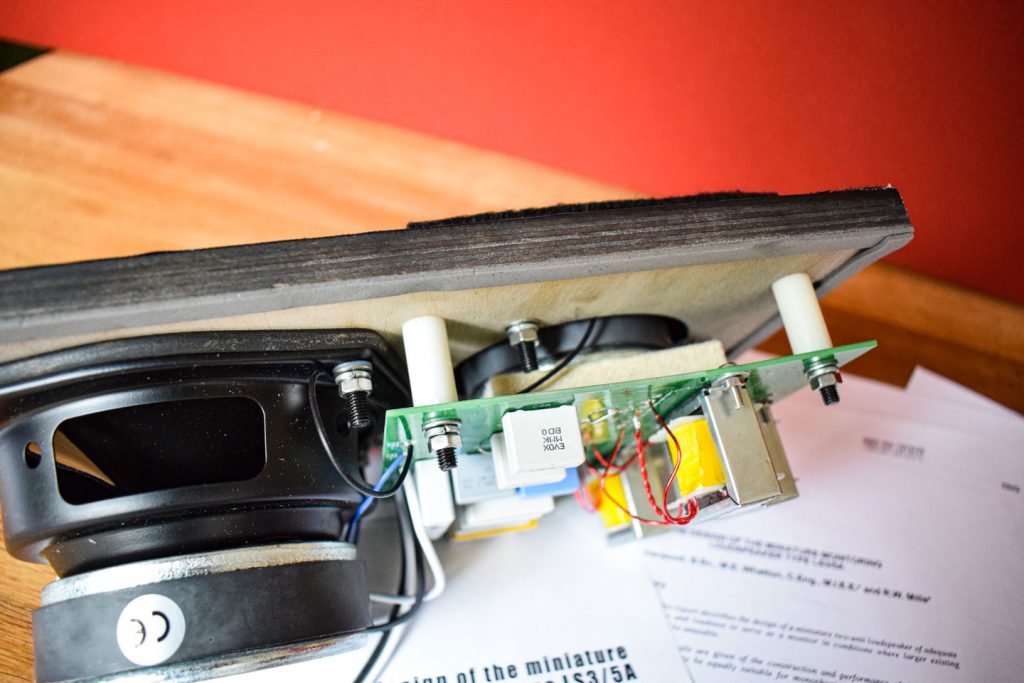
The great thing about this option is that you can’t really go wrong, you understand this small monitor better and you save a lot of money in the process. At 1,150 euros, the do-it-yourself version is by far the cheapest way to get an LS 3/5a. For comparison: the current LS3/5a from Falcon Acoustics costs 3,000 euros per pair. And another advantage of the do-it-yourself alternative: you can paint them in exactly the color you currently need. By the way, birch plywood also looks pretty good in nature…
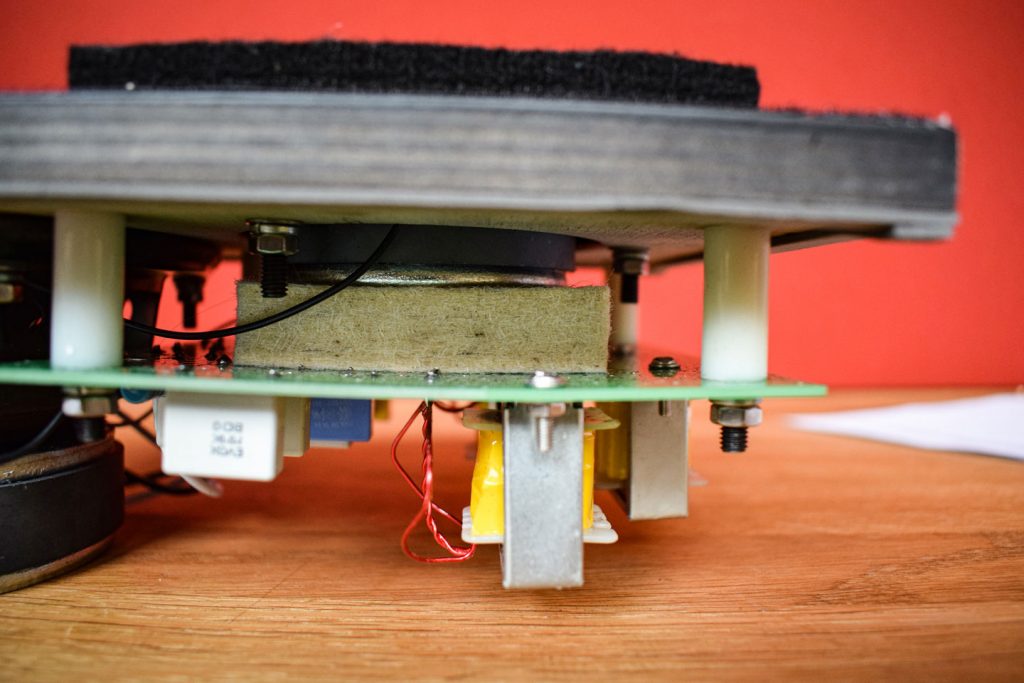
So the Harwood LS3/5a looks like the BBC classic and – as we’ll see in a moment – sounds like the legendary speaker, but is significantly cheaper than all other current LS 3/5a offerings. How do you do that, Mr. Saerbeck? He has to smile: “We met the BBC requirements to the letter, but we didn’t apply for the license…” This of course saves money.
Measured values & practice
When Saerbeck commissioned the replicas of the old KEF drivers, he stayed as close as possible to the originals. However, this also means that, like the models from the 1970s, the replicas are also fairly quiet. In the efficiency measurements, we achieved a value of just over 80 dB (1 watt/1 meter). This makes the Harwood LS 3/5a one of the quietest compact speakers ever tested by LowBeats and theoretically requires a lot of power on the amplifier side.
But that is actually theoretical. Because although the small Harwood needs a lot of watts, it can’t handle a lot of power. Bottom line: You won’t be listening to music very loudly with this “speaker”.
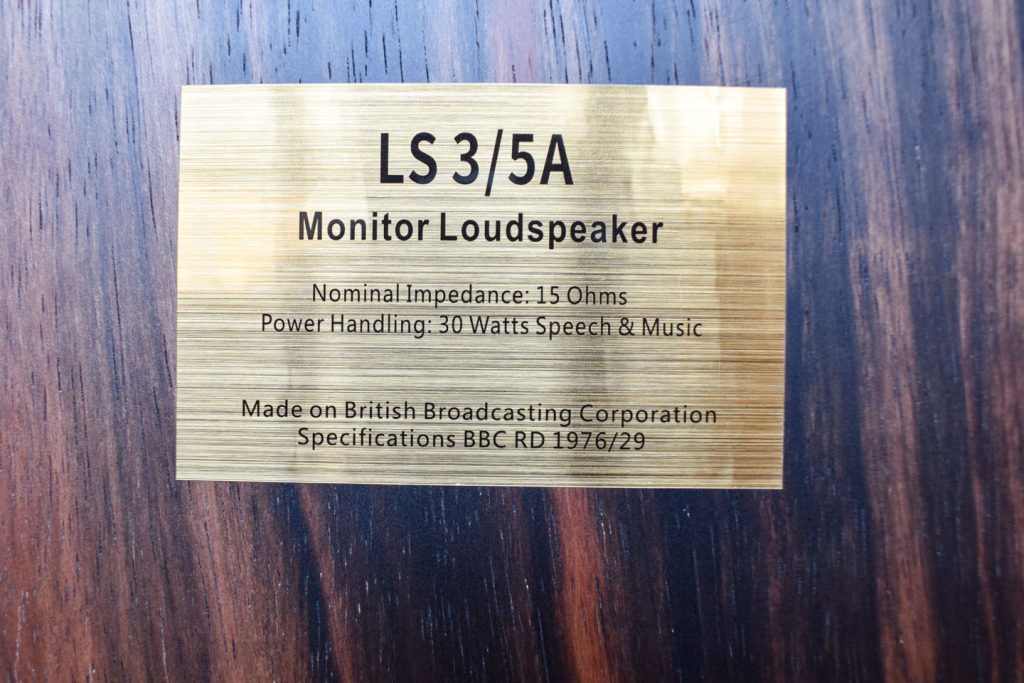
For the situation for which it was designed, however, this is perfectly adequate. We are talking about smaller rooms up to a maximum of 20 square meters, in which the Harwood LS 3/5a is positioned quite close to the rear wall and the music listener sits in the so-called near field. The proximity to the rear wall provides a little more fullness in the bass, which is good in this case: below 80 Hertz, the bass of the closed mini speaker drops significantly. Ideally, the LS 3/5a should be placed on stable stands, somewhat less ideally, but also justifiably, on the sideboard.
The measurements turned out to be significantly better (i.e. more linear) than expected. The frequency response between 100 – 20,000 Hertz is astonishingly linear; the original LS 3/5a was quite different. It had a decent bass boost hump at just over 100 hertz. Normal at the time, but unusual today: The nominal impedance of the Harwood is 15 ohms. This is quite high and transistor amplifiers deliver only half their 8-ohm power into 15 ohms,
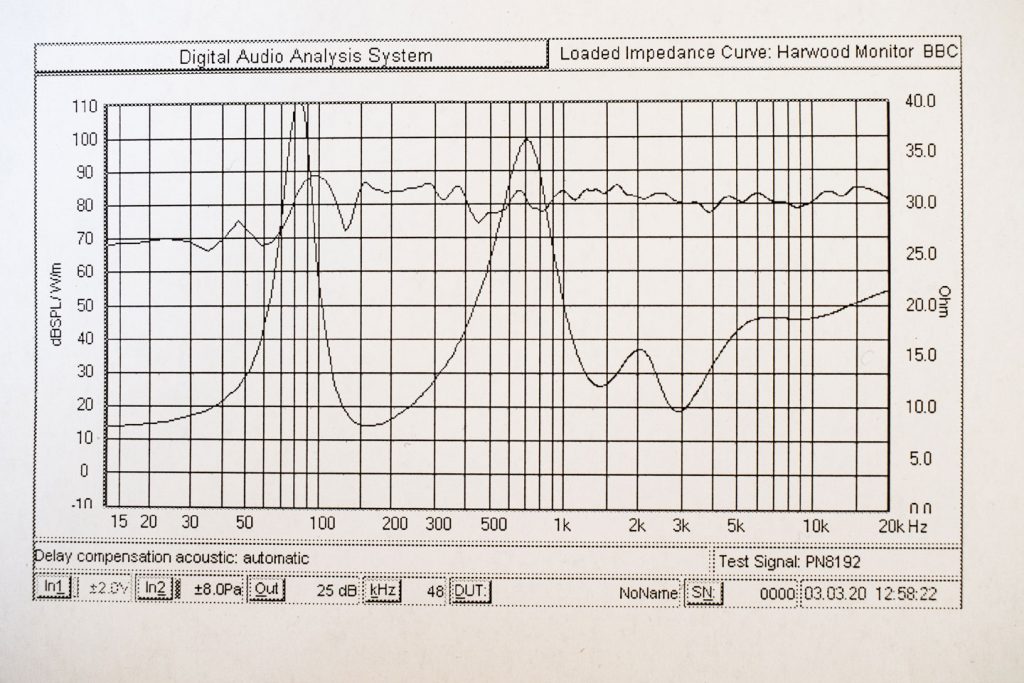
In terms of the connected amplifiers, we have found two dream combos for the Harwood LS 3/5a. On the one hand with the agile and elegant integrated amplifier Atoll IN 50 Signature (750 euros), which delivers around the suggested 30 watts into 15 ohms and can fully exploit this speaker in terms of level. On the other hand with the Mira Ceti from Fezz Audio (2,600 euros), which achieves a good 10 watts with its 300B tubes at such a high impedance. Anyone who gets involved with this combination knows that it definitely won’t be very loud. But he is reconciled with a sensationally “real” and colorful sound.
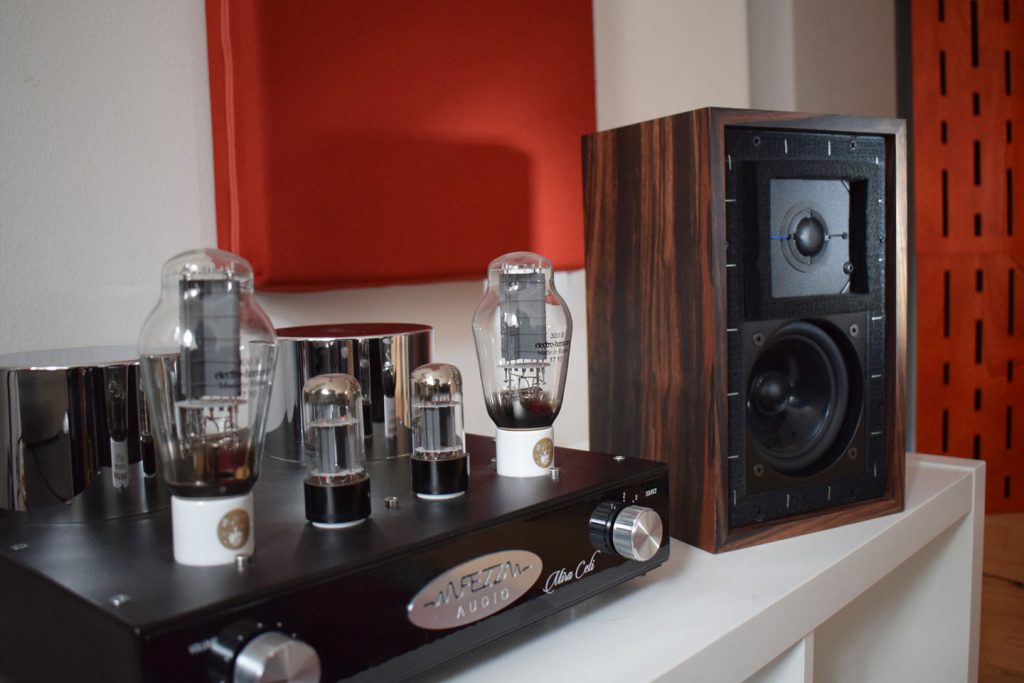
Listening test of the Harwood LS 3/5a
Properly set up, it doesn’t take a minute for this speaker to ensnare, capture and overwhelm the listener. The timbres are wonderfully full, the vocal reproduction – always the LS 3/5a’s top discipline – a stunner. What Harwood does particularly well are singer songwriters. Take Livingston Taylor, for example. His cover of the Steve Wonder hit “Isn’t She Lovely?” is a sensation with the mini box. The singer’s voice is sonorous and sympathetic. You have the feeling of being in the recording – that’s how vivid Taylor and his guitar are in the room – and thanks to the intimate proximity that Harwood creates to the artist, you can hear all the micro-details on the recording.
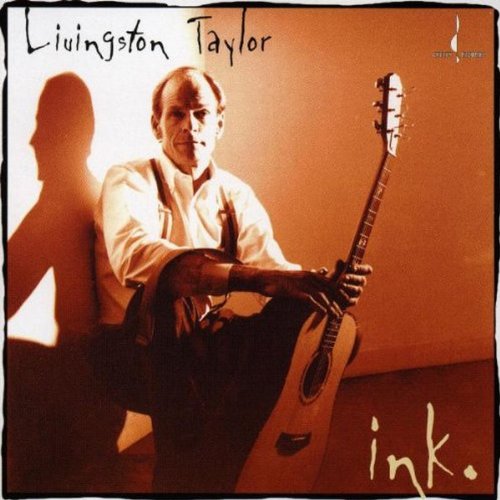
Now the Harwood is by no means a resolution miracle. And even in the bass/treble range, the little one tends towards a blissfully rich rather than a fast and precise reproduction. With hard kicked bass drums like at the beginning of James Blood Ulmer’s “Crying”(Album: Live At The Bayerischer Hof Munich), the little girl remains rather timid. But how could it be otherwise? The loudspeaker is petite and the drivers are 50 years old. Back then, everything was a bit more leisurely… But everything is incredibly homogeneous, coherent and right. The individual instruments of the orchestra also sound incredibly colorful and vivid. The overtones of the strings are clearly audible, but not over-pointed. There is simply nothing to get in the way. And with very spatial recordings (such as Felix Laband’s “Miss Teardrop”), this speaker actually manages to position one or two bells directly above the listener’s head. Not many people can do that…
With so much praise, the question remains as to how the Harwood LS 3/5a fares against its competitors. One comparison was obvious: the one against the licensed Rogers from the 1980s. I have appreciated this speaker for a very long time, but was dismayed to discover that the younger Harwood is better in every respect. Two things in particular stood out: The Rogers plays spatially, but also tonally a lot flatter. As usual, I invited some friends to listen in and the vote was unanimous: full marks for the Harwood.
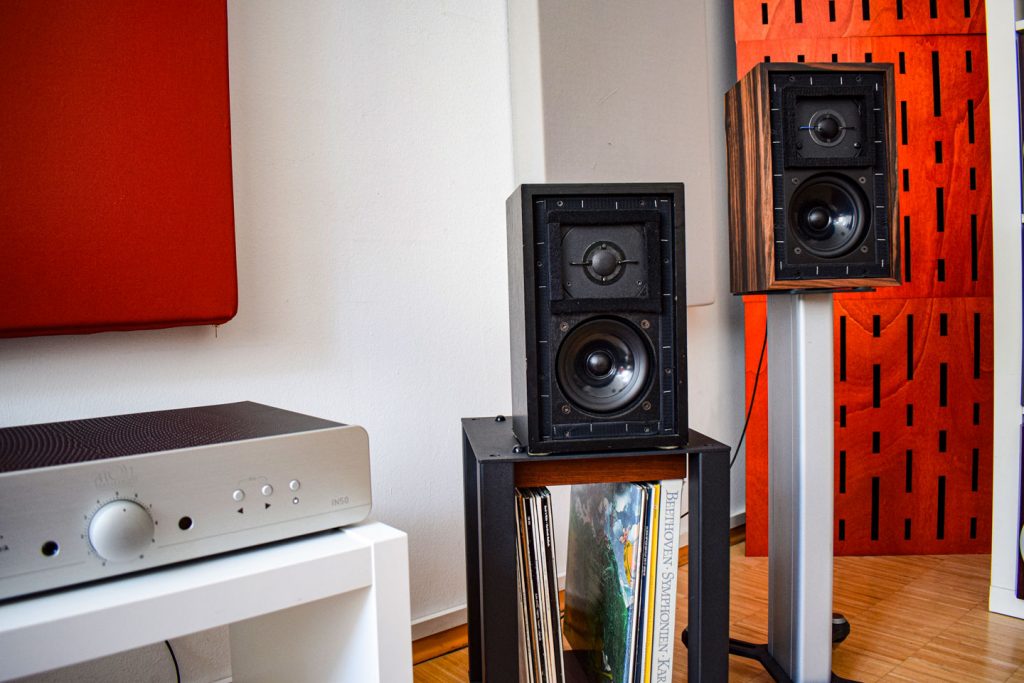
The march through against our other perennial favorite in this class, the Dynaudio Excite X 18did not. Although not a dynamic miracle itself, it showed more attack and significantly higher level reserves. With drum solos and rough electro-pop, there was a lot more. At a moderate level, however, the magic of the little Harwood was immediately there again: those voices, that spatiality. The loudspeaker has something decelerating about it. I felt the same way: even with all the hectic pace of everyday testing, after a few minutes of listening it brought me back down in the most pleasant way. Is it even possible to pay for it?
Conclusion
It can’t be loud, it can’t be deep. Nevertheless, this Harwood replica of the LS 3/5a is one of the most enchanting audiophile offerings of spring 2020. It resembles the BBC model down to the hair, sounds even a touch better and is unbeatably cheap, especially in terms of the kit price. We haven’t had so much fun with a mini monitor for a long time. And this one also has legendary genes… An explicit recommendation!
Sound QualityUsabilityBuild QualitySummary |
| The rating always refers to the respective price category. |
| | Extremely lifelike, colorful and natural sound |
| | Fantastic plasticity, great spatial depth |
| | Unbeatable value, especially as a kit |
| | Poor efficiency, limited level capability, somewhat soft bass |
Distribution:
Hifisound Münster
Drensteinfurtweg 32
48163 Münster
www.hifisound.de
Pair price (manufacturer’s recommendation)
Harwood LS 3/5a kit: 890 Euro
Harwood LS 3/5a finished box: 1.798 Euro
Mentioned in the test:
Test Harbeth P3ESR 40 AE: the designated LS 3/5 successor
Test ProAc Tablette 10: the small speaker wonder
Test Dynaudio Excite X 18: the fine compact speaker
Test integrated amplifier Atoll IN 50 Signature: full sound splendor for 750 euros
Test 300B tube amplifier Fezz Audio Mira Ceti



